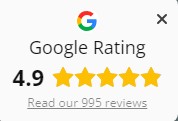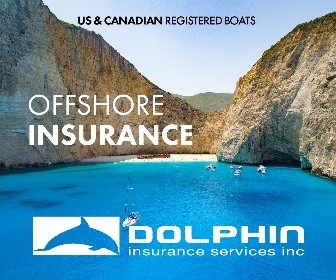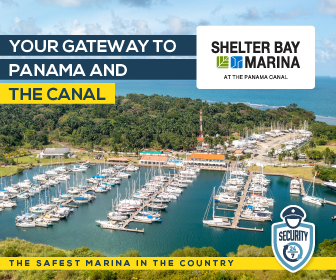Curaçao: Golf Balls Create Invisible Underwater Pollution
While exploring a beautiful reef off the coast of Curaçao in the Caribbean, full-time liveaboard cruisers and dive professionals Karen Erens and dive buddy Jean-Marc were surprised to discover golf balls among the coral, possibly from an on-shore golf course near the dive site. In this report Karen brings to light this invisible source of underwater pollution.
Published 6 days ago, updated 17 mins ago
Invisible Pollution Underwater: The Truth About Golf Balls
Beep. My dive computer alerts me that I’ve just started my safety stop at five meters. This spot is teeming with life among the soft coral, which contrasts beautifully against the white sand.
Wait… what’s that? A color that doesn’t belong underwater—bright pink. I swim closer and discover a golf ball nestled between the roots of the fluffy soft coral. As I pick it up to tuck it into my BCD pocket, I spot another white golf ball. And another. And another… it almost feels like an Easter egg hunt.
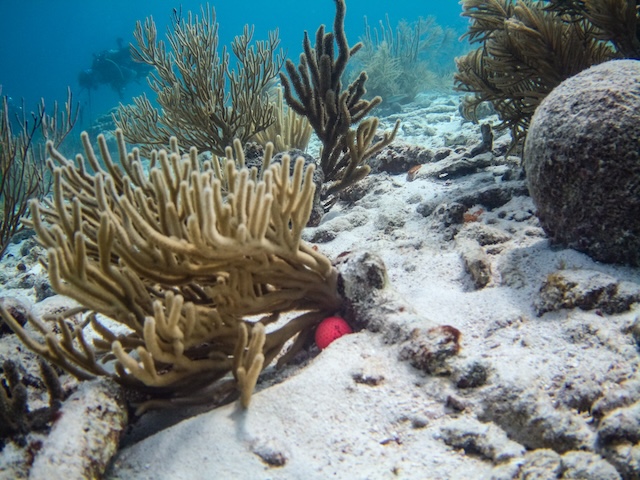

One by one, I pluck them from the coral, realizing that they must have come from the nearby golf course, accidentally—or perhaps even deliberately—hit into the sea.
I look up to signal Jean-Marc, my dive buddy and see that he is also head – deep in the soft coral. Then he straightens up and shows me a golf ball. Apparently, I’m not the only one noticing these unwelcome visitors.
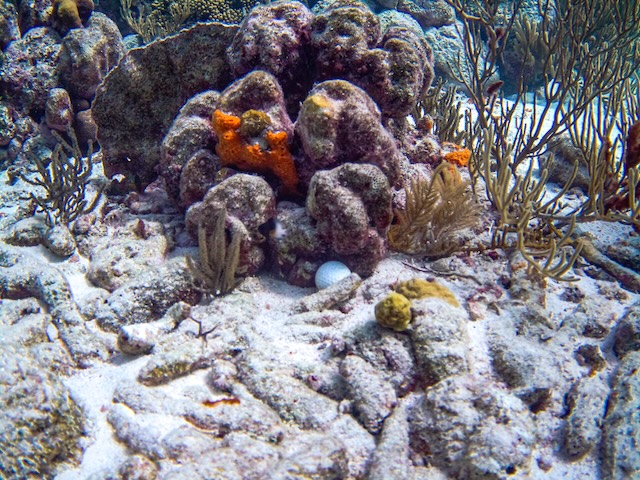

The three minutes of our safety stop have long passed, yet we continue collecting golf balls. Most are well hidden among the coral; some are so overgrown with coral or algae that they’re only recognizable by their perfectly round shape—quite a rarity underwater.
After about 15 minutes and an almost empty tank, we give up. Our collection bag is filled to the brim. Not a single ball more will fit.
The result? A staggering 152 golf balls in just 15 minutes! Imagine how many must be scattered along the entire length of the reef bordering this golf course.
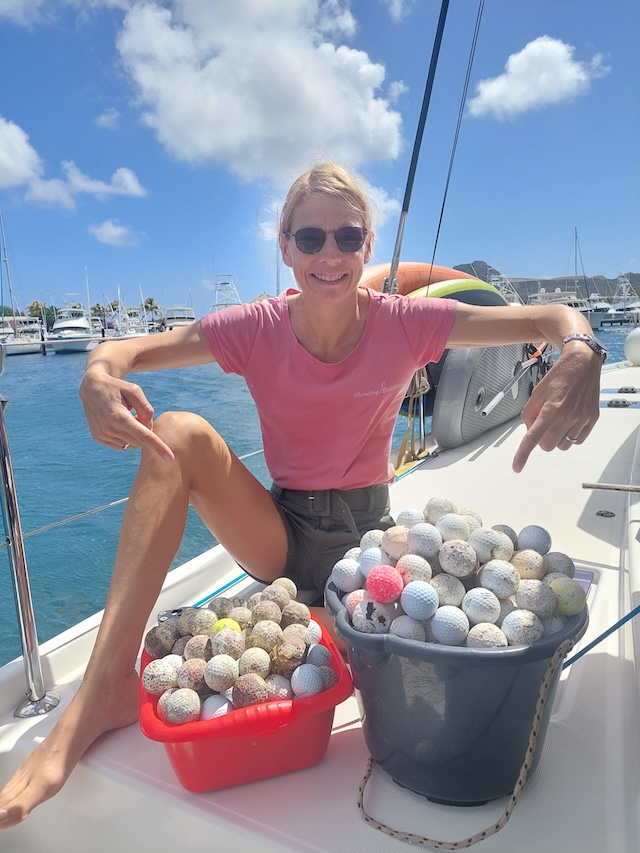

Who Are We?
As full-time liveaboard divers, we explore remote dive sites and share our underwater adventures. Every place we visit, we explore beneath the waves. Most of the time, we encounter stunning underwater scenes and exciting marine life—but far too often, we also find pollution. We frequently remove fishing lines tangled in coral, retrieve lost anchors, or pick up bottles and cans during our safety stops.
The Impact of Golf Balls on the Reef
Golf balls underwater are rare, but with a golf course and a hole positioned right next to the sea, it’s inevitable that some end up in the ocean. Once they sink, they disappear from everyone’s view, and no one seems to worry about them anymore. But as divers, we witness the consequences firsthand.
Golf balls slowly break down, releasing microplastics and other toxic substances into the ocean. We’ve even found golf balls with coral growing on them, bearing the scrape marks of parrotfish. These fish graze on algae – covered surfaces for food, unintentionally ingesting microplastics in the process, a hidden pollution problem that few ever consider.
After weeks of diving, we’ve already recovered 3,500 golf balls, a massive number accumulated over years of golfing. The golf course is in Curaçao, next to the sea (between Santa Barbara and the entrance to Fuik Bay). We contacted the golf club and their first reaction was “That’s not our problem.” Later on they said something about using biodegradable golf balls but we didn’t hear anything more from them, so to us it seems that they don’t care.


Why Do We Do This?
We’ve been diving worldwide for many years and have seen reefs and their ecosystems deteriorate, largely due to increasing pollution. Sometimes it’s floating debris, sometimes it’s reefs overgrown with algae, or coral gardens with fewer and fewer fish.
If we can make a difference, we’re happy to dedicate part of our dives to a good cause: cleaning up, so that we and other divers, can continue enjoying pristine, unpolluted reefs.
Will You Join Us?
Our oceans deserve better. If you want to enjoy breathtaking dives for years to come, maybe you’d like to contribute to a cleaner underwater world too?
How You Can Help
Hop aboard Blowing Bubbles and learn all about the magic of diving with a mission. On your next dive, you’ll be on the lookout for garbage. We teach you how to be prepared and bring the garbage up in a safe way. Together, we can make a difference! Send us a message and become part of the change.
Karen Erens
www.blowingbubbles.eu
info@blowingbubbles.eu
…………………………………
About the Authors
Karen and Jean-Marc are dive professionals traveling the world aboard their catamaran SV Blowing Bubbles. They left Europe four years ago, crossed the Atlantic and have been sailing and diving in the Caribbean since then. Currently they are anchored in Curaçao. The next part of their adventure will see them heading to Panama and the Pacific.


…………………………………
© 2025 Noonsite. This content was edited by Noonsite. Do not reproduce without permission. All rights reserved.
The opinions expressed in this article are the author’s own and do not reflect the view of http://Noonsite.com or World Cruising Club.
If you have found this information useful, become a paid member to enjoy unlimited use of Noonsite plus many other perks. Your membership fees really help our small, dedicated team keep country information up-to-date in support of cruisers worldwide. Find out more about Noonsite Membership levels and benefits here.
Subscribe to our FREE monthly newsletter: https://www.noonsite.com/newsletter/
Related to following destinations: Curacao, Spanish Water
Related to the following Cruising Resources: Cruising Impact, Environment, General, Volunteer Projects

